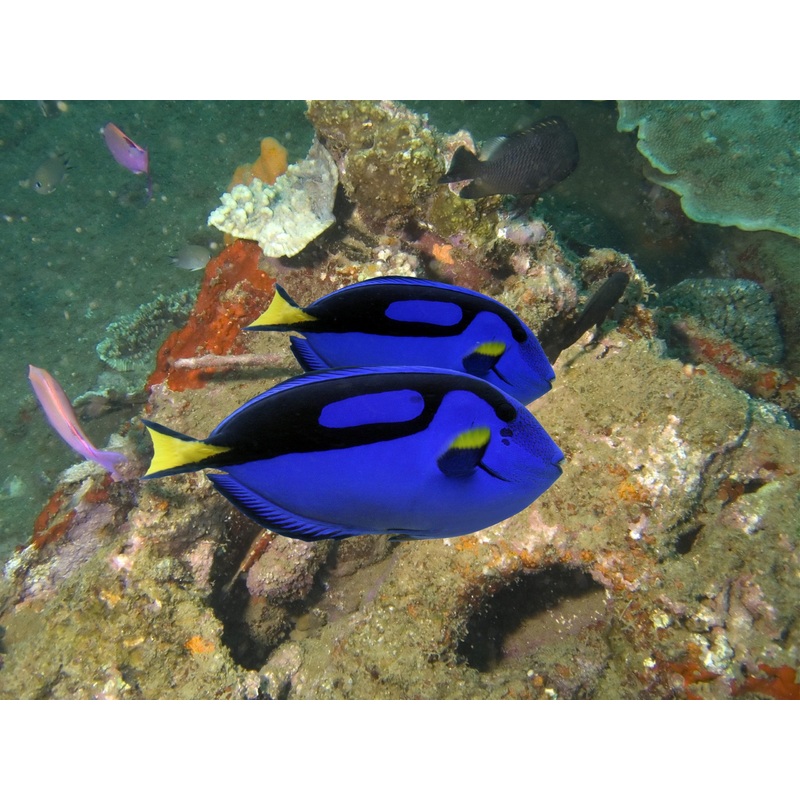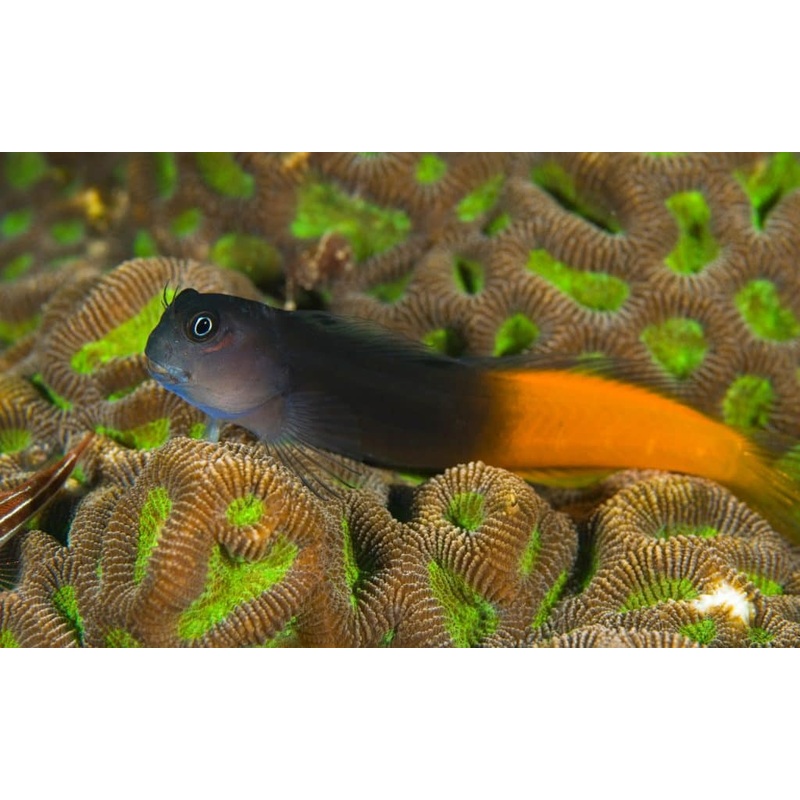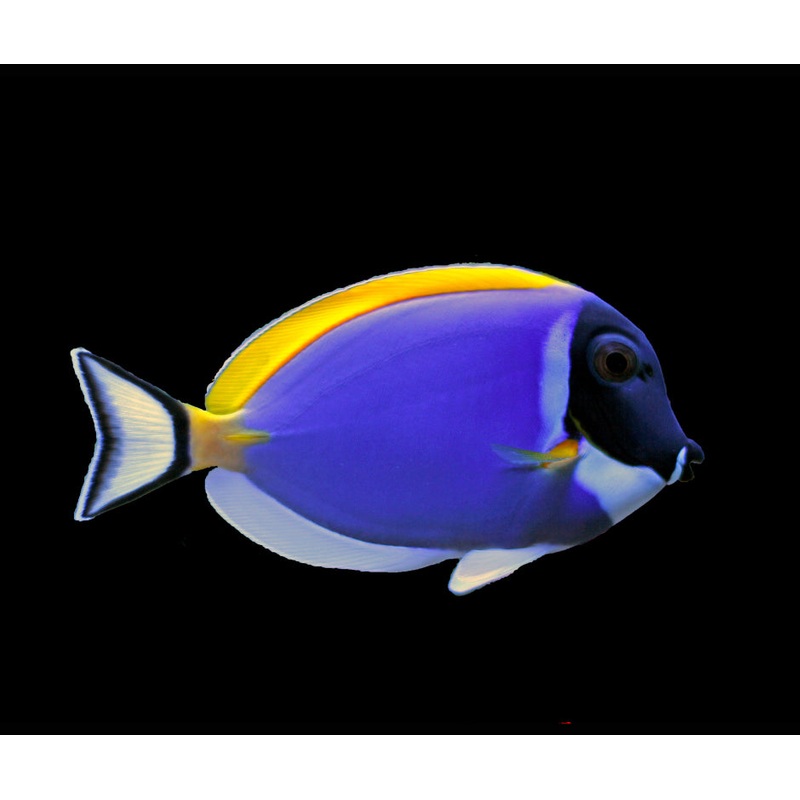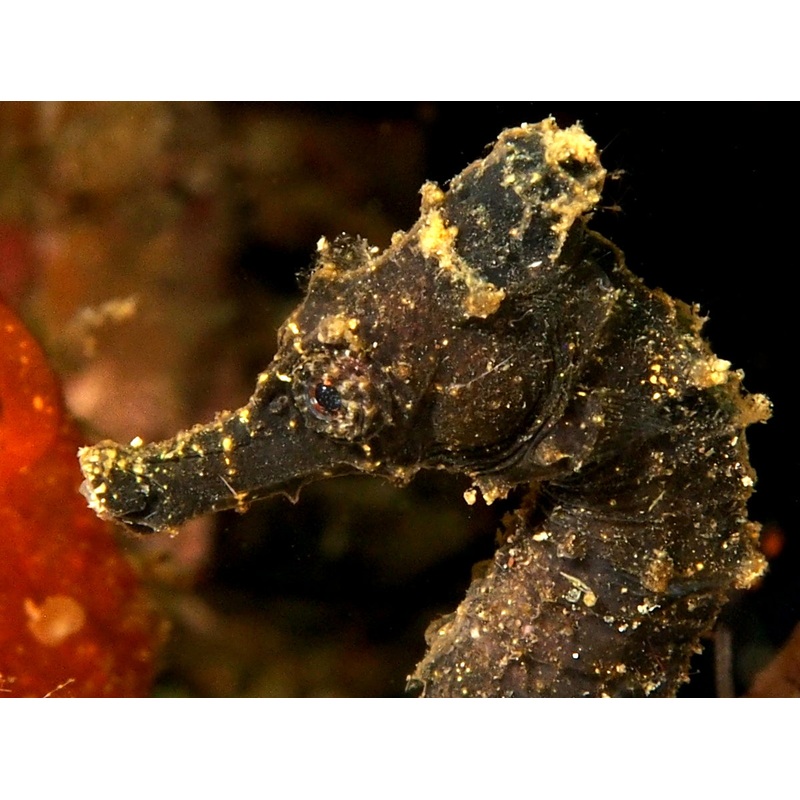Description
Yes it’s Dory…
Minimum Tank Size: 180 gallons
Care Level: Easy
Temperament: Semi-aggressive
Reef Compatible: Yes
Water Conditions: 72-78 F, dKH 8-12, pH 8.1-8.4, sg 1.020-1.025
Max. Size: 1′
Color Form: Blue
Diet: Herbivore
Origin:Fiji, Indonesia, Maldives, Solomon Islands
Blue Tangs are best cared for in aquariums at least 6 feet in length by experienced marine (saltwater) aquarists. If you’re a beginner, we recommend a similar-looking fish such as the Marine (Saltwater) Yellowtail Damselfish or Freshwater Boesemani Rainbow.
The Blue Tang boasts a vibrant electric blue body dressed with bold black markings. In fact, the black that begins at the eyes, traces the dorsal line down to the tail, and circles back above the pectoral fin to create a unique shape reminiscent of a painter’s palette. This marking is why the Blue Tang is also known as the Palette Surgeonfish. It is also called the Pacific Blue Tang, and Hepatus or Regal Tang. Regardless of common name,Paracanthurus hepatusis equal parts beauty and peacefulness that suits almost any large community marine aquarium.
Native to reefs across the Indo-Pacific, the Blue Tang relishes a good hiding location amongst live rock. However, this active fish also loves to swim. Therefore, ample room to roam around your aquarium is essential for optimum health. Though peaceful towards most tankmates, the Pacific Blue will become aggressive towards other fish of its own species. To keep multiple specimens, introduce the entire lot at once into a larger marine system.
Although Tangs will eat meaty foods along with the other fish in the aquarium, it is important that they are offered plenty of marine based seaweed and algae. This will strengthen the Blue Tang’s immune system, reduce aggression and improve their overall health. Offer dried seaweed tied to a rock or use a veggie clip, and feed at least three times per week. Sea Veggies, Seaweed Salad and Ocean Nutrition are all ideal products and are very easy to use.
Proper care of the Blue Tang requires a slightly higher degree of dedication and attention as it is more susceptible to lateral line disease, fin erosion, Ich and other skin parasites than many other fish. Ensure highest water quality and a varied diet, rich in nutritious marine-base vegetables to keep your Blue Tang in optimal health.







Reviews
There are no reviews yet.